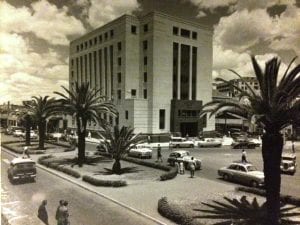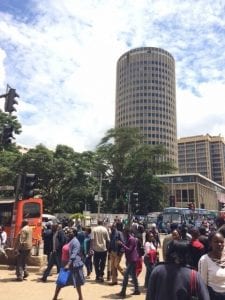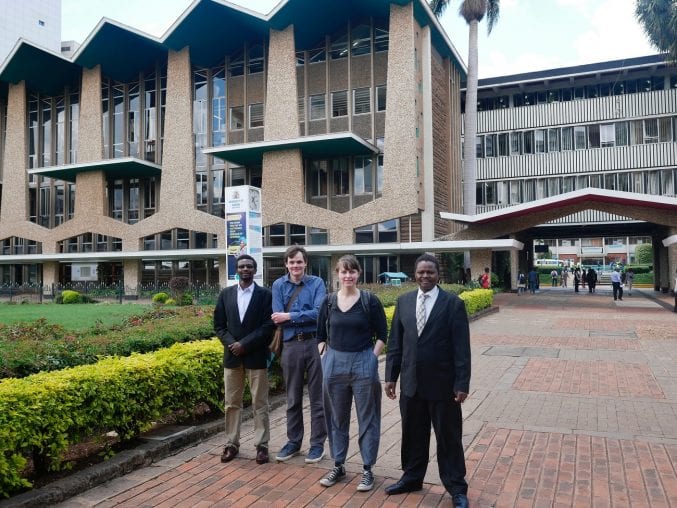Bristol and Nairobi – a new archives partnership
Posted on by Fay Curtis.
by Dr Liz Haines, University of Bristol
At the beginning of April I travelled to Nairobi along with Dr Neil Carrier. Our visit was part of a project—funded by the University of Bristol—to begin exploring the potential for collaboration and research between Bristol Archives, the University of Bristol and Kenyan researchers and organisations
The prompt for our journey to build new networks was the extensive range of photographic collections at Bristol Archives that document East Africa. These images, formerly in the British Empire and Commonwealth Museum, are gradually being catalogued and made available for research. One of the most important of the East African photographic collections is the Charles Trotter Collection.
Charles Trotter was a commercial photographer who worked in Nairobi between 1951 and 1962. The collection includes nearly 50,000 negatives that were produced in that period.

Many of Trotter’s images record the celebrations and leisure activities of the white settler communities.
However he was also commissioned to document the daily activities of farms and businesses, the construction of new urban developments and infrastructure projects, and the arrival of VIPs in the region.
In Kenya we met individuals from a number of universities and heritage organisations. In a series of meetings and a workshop at the British Institute for Eastern Africa, we brainstormed a number of lines for collaboration:
- Do the Bristol archival holdings complement existing photographic archives in Kenya? Could we locate non-archived collections that could be acquired by Kenyan institutions and offer insights into the perspective of the African and Asian communities in East Africa?
- Are there gaps in the Kenyan archives which could be partially filled by material in the UK? For example, material which was brought home by returning colonial servants.
- Might there be possibilities for digitising collections in the UK and Kenya in parallel, and for sharing strategies for public engagement with the digitised material?
- Could these photographic archives provoke new lines of research and student projects?

We were delighted to find a strong enthusiasm for photographs both as a research resource and as a means of capturing public interest in history. We found that several parties had an interest in raising awareness about industrial heritage and the history of urbanisation in Kenya.
This interest was shared between artists, architects, and museum curators, as well as by historians and archivists, so those themes look like promising avenues for further discussion.
Over the coming weeks we will be continuing conversations and hope to co-produce a funding application that will allow us to realise some of these projects. We’d like to thank the following for their interest in the project and for their contributions to this very early stage of project development:
Professor Ephraim Wahome (University of Nairobi), Dr Mugwima Njuguna and Dr Teckla Mohoro (Jomo Kenyatta University of Agriculture and Technology), Dr Lydia Muthuma (Technical University of Kenya), Peterson Kithuka (National Archives, Kenya), Dr Maurice Barasa (Nairobi Railway Museum), Audia Atogo, Lydia Nafula, Mercy Gakii Kinyua, Philemon Ochieng’ Nyamanga, Hassan Kochore (National Museums Kenya).
Images:
- Liz Haines and Neil Carrier (University of Bristol) at the University of Nairobi with Professor Ekphraim Wahome (Associate Dean, Faculty of the Arts, University of Nairobi) and Dr Mugwima Njuguna, (Lecturer in Architecture at Jomo Kenyatta University of Agriculture and Technology)
- Downtown Nairobi in the 1950s, from the Charles Trotter collection (ref. 2001/090/1/5/1/13)
- Downtown Nairobi in 2018
- Featured image: Trains at the Nairobi Railway Museum with the skyline behind. The British Empire and Commonwealth Collections hold images from the East Africa Railways and Harbours
